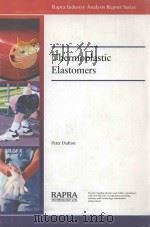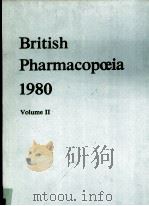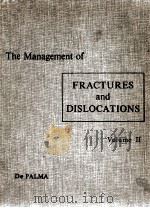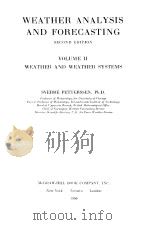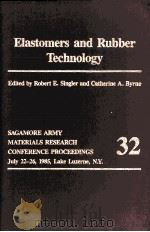《ELASTOMERS AND PLASTOMERS VOLUMEⅡ》
| 作者 | R.HOUWINK 编者 |
|---|---|
| 出版 | ELSEVIER PUBLISHING COMPANY.INC |
| 参考页数 | 515 |
| 出版时间 | 没有确切时间的资料 目录预览 |
| ISBN号 | 无 — 求助条款 |
| PDF编号 | 811598568(仅供预览,未存储实际文件) |
| 求助格式 | 扫描PDF(若分多册发行,每次仅能受理1册) |
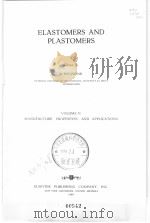
1.PHENOL-FORMALDEHYDE PLASTOMERS by R.HOUWINK (Wassenaar, Netherlands)1
1.Introduction1
2.Raw materials1
3.Manufacture of the resins5
4.Hardening of the resins10
a.The phenol- and cresol formaldehyde resins10
b.The aniline resins15
5.P.F.Resins for varnishes, paints and lacquersby C.P.A.KAPPELMEIER (Sassenheim, Netherlands)17
a.Introduction17
b.Classification of phenolic resins for the varnish industry19
c.Rosin modified phenolic resins19
d.Alkyl phenolic resins (Oil-reactive phenolics)22
e.Pure phenolic setting resins (Resols)23
f.Plasticised and/or elasticised phenolic setting resins25
g.Pure phenolic non-setting resins (Novolaks)27
h.Mixed phenolic resin esters27
i.Terpene phenolic resins27
j.Combinations of phennolic resins with other syntheticresins28
k.Application of phenolic resins in the varnish industry28
l.Practical applications of phenolic resin based varnishes28
m.Conclusion and prospects29
6.The applications of straight phenol-formaldehyde resins29
a.Adhesives30
b.Cast resins30
c.Straight resin moulding materials30
1.Phenol-formaldehyde resins32
2.Based on anilin eresins32
7.Moulding components34
a.The fillers34
b.Manufacture of moulding powders37
c.Flow properties and hardening velocity39
d.The moulding process43
e.Extrusion (jet moulding)49
8.Properties of the moulded products49
9.Making of laminated materials56
a.Raw materials56
b.Manufacture58
10.Properties of laminated materials62
11.Machining71
References73
2.SYNTHETIC RESIN ION EXCHANGERS by A.VAN ROYEN (Delft, Netherlands)76
1.Introduction76
2.Structures77
a.Wofatit P78
b.Wofatit C79
c.Wof atit KS79
d.Wo f atit M79
e.Dowex80
3.Properties81
4.Applications84
References87
3.UREA AND MELAMINE RESINS by G.WIDMER and K.FREY (Basle, Switzerland)88
1.General88
2.Basic raw materials88
a.Urea88
b.T hiourea89
c.Aminotriazine (Melamine)90
3.The course of the condensation reactions91
a.General91
b.Urea92
c.Thioureas97
d.Melamine97
4.Properties and technical production of carbamide and aminotriazine resins99
a.Raw materials and first applications99
b.Moulding compounds99
c.Laminated products107
d.Adhesives for wood107
e.Lacquers based on urea and melamine resins111
f.Applications in the textile f ield112
g.Applications in the paper industry114
h.Diverse applications115
1.Tanning agents115
2.Cork bonding agents115
3.Core banding agents116
4.Stiffening caps for shoes117
5.Foam materials117
References118
4.POLYMERS FROM ETHYLENE DERIVATIVES by H.T.NEHER (Philadelphia, U.S.A.)119
1.Introduction119
2.Preperation of the monomers120
a.Styre120
b.Ethylene and isobutylene121
c.Vinyl esters122
d.Vinyl ethers124
e.Heterocyclic vinyl compounds124
f.Vinyl ketones125
g.Allyl compounds125
h.Acrylic and methacrylic acid compounds127
3.Polymerization130
a.Polymerization catalysts130
b.Polymerization methods133
c.Copolymerization137
4.Chemical conversion of polymers140
5.Physical treatment of polymers141
6.The individual resins and their applications142
a.Polystyrene142
b.Polyvinyl carbazole, Polyvinyl ethers146
c.Polyethylene, Polyisobutylene147
d.Organic polyvinyl esters148
e.Inorganic polyvinyl esters and copolymers148
f.Reaction products of polyvinyl esters153
g.Allyl polymers156
h.Acrylic resins157
References164
5.THE CELLULOSE DERIVATIVS by V.E.YARSLEY (Ewell, England), H.KITCHEN(Birmingham, England), and W.J.GRANT (London,England)167
1.The structure of cellulose167
2.The cellulose esters and ethers173
A.General173
a.Cellulose esters173
b.Cellulose ethers173
c.Cellulose ether-esters174
B The cellulose esters of inorganic acids175
a.Cellulose nitrate175
b.Miscelaneous esters176
1.Cellulose sulphate177
2.Cellulose phosphate177
C.The cellulose esters of organic acids177
a.Cellulose f ormate178
b.Cellulose acetate178
c.Cellulose propionate179
d.Cellulose butyrate180
e.Higher aliphatic acid esters181
f.Miscellaneous esters181
D.The mixed esters of cellulose181
a.Cellulose acetate-nitrate181
b.Mixed esters of organic acids182
1.Cellulose acetate-propionate182
2.Cellulose acetate-butyrate182
c.Miscellaneous mixed esters183
E.The cellulose ethers184
a.Methyl cellulose184
b.Ethyl cellulose186
3.Solvation and plasticisation of cellulose derivatives189
a.Sol vation189
b.Plasticisation191
4.The manufacture and processing of plastics from cellulose derivatives195
a.The manufacture of the plastic composition195
b.The manufacture of sheets196
c.The manufacture of rods and tubes200
d.The manufacture of films and foils202
1.Preparation of solution203
2.Filtration of solution203
3.Deaeration of solution203
4.The casting process203
5.After-drying, reeling and slitting204
e.The moulding o f cellulose plastics205
1.Compression moulding205
2.Transfer moulding205
3.Injection moulding206
f.Manufacture of lacquers, coating and impregnating compositions206
g.Miscellaneous products and processes; sponges and cell-ular materials208
5.The properties and applications of the commercial cellulose plastics208
a.Mechanical properties209
1.Tensile strength209
2.Impact strength212
b.Thermal properties213
1.Softening temperature213
2.Flow temperature214
c.Electrical properties215
d.Optical properties215
e.Stability215
1.Water resistance215
2.Temperature resistance216
3.Weathering217
6.Analysis of cellulose plastics218
a.Identification218
b.Separation of plasticiser219
c.Acetyl content of cellulose acetate219
d.Nitrogen content of cellulose nitrate219
e.Alkoxyl and free hydroxyl content of cellulose ethers220
7.Applications220
a.Rayon fibres220
1.Viscose221
2.Cuprammonium222
3.Acetate rayon222
4.Miscellaneous223
5.Staplefibre224
b.Moulded plastics224
c.Sheets, films and foils225
d.Lacquers, coating and impregnating compositions227
e.Adhesives and cements229
f.Miscellaneous uses230
References231
6.PROTEIN PLASTICS240
Part.Ⅰ.Protein pastics other than fibres.240
by A.D.WHITEHEAD and S.H.PINNER (Manningtree,England).240
1.Introduction240
2.General chemistry of the proteins241
3.Proteins of a special interest to the plastics and spinning industries247
a.Casein247
b.Soya protein250
c.Zein and zeinin252
d.Arachin and conarachin256
e.Keratin257
f.Fibrinogen258
g.Egg albumin260
h.Biological waste products261
4.Theories of hardening of proteins with formaldehyde262
a.Reaction o f formaldehyde with specific functional groups262
b.The analysis of protein-formaldehyde reaction products263
c.The hardening reaction264
d.The diffusion factor265
e.Reaction kinetics267
5.Modifying agents268
a.Chemical modification268
b.Waterproofing agents270
c.Waterproofing of zein272
d.Plasticisers272
e.Fillers273
f.Clarifiers274
6.Manufacture and manipulation of casein plastics274
a.The hardening process278
b.Drying and finishing operations280
7.Properties and uses of casein plastics281
References283
Part.Ⅱ.Fibres from proteins.287
by C.DIAMOND (Coventry, England).287
1.Introduction287
2.Theory of fibre structure as it relates to proteins288
3.Chain length290
4.Constitution of proteins used in synthetic fibre processes291
5.The fibre-spinning solution292
6.Fibre-coagulation processes293
a.The Lanital (casein) process293
b.Arachis protein fibre295
c.Soybean protein fibre295
d.Zein fibre296
e.Egg albumen fibres296
f.Fish protein fibres297
7.After-treatments of the coagulated fibre297
a.Hardening and insolubilising297
b.After-treatments with metallic salts299
8.Physical properties299
9.General properties306
a.Dyeing308
b.Felts and other uses310
References311
7.SYNTHETIC POLYAMIDES by L.F.SALISBURY (Wilmington, Del., U.S.A.).313
1.Introduction313
2.Chemical reactions313
3.Commercial processes315
4.Properties and applications320
References327
8.SILICONE POLYMERS by J.R.ELLIOTT (Schenectady, N.Y.U.S.A.).331
1.Introduction,330
2.Chemistry of silicones and their intermediates331
a.General remarks331
b.Preparation of intermediates333
1.Coupling reactions333
2.Direct synthesis334
3.Properties and applications335
a.Silicone oils335
b.Silicone rubber339
c.Silicone resins340
d.Water repellent films from silicones345
References346
9.ALKYD RESINS by J.R.PATTERSON(Schenectady.N.Y., U.S.A.).347
1.Introduction347
2.Raw materials348
a.The acids348
b.The alcohols349
3.Resinification351
4.Applications357
5.Large sale manufacturing359
References362
10.NATURAL RESINS AND THEIR DERIVATIVES by C.CLARE (Wilmington, Del., U.S.A.).363
1.Classification; Production363
2.Natural resins364
a.Physical properties and chemical nature in general364
b.Dammers365
c.East Indias365
d.Manila copal365
e.Congo copal369
f.Thermal processing369
g.Kauri copal371
h.Miscellaneous resins372
i.Esters and other derivatives373
3.Rosin374
a.Methods of production375
1.Gum rosin375
2.Wood rosin375
b.Chemical structure of rosin376
c.Derivatives of rosin379
d.Modified rosins380
1.Hydrogenated rosin380
2.Polymerized rosin381
3.Disproportionated (dehydrogenated) rosin382
e.Resinates383
f.Esters of rosin385
g.Other rosin derivatives387
h.Physical properties387
1.Viscosity387
2.Electrical properties388
3.Optical rotations and crystallinity388
4.Pluorescence and light absorption ,389
i.Vinsol389
4.Lac and Shellac390
a.Commercial lacs390
1.Seed lac390
2.Shellac391
3.Button lac392
4.Garnet lac392
5.Bleached shellac392
b.Physical properties of shellac392
1.Solubility and viscosity393
2.Thermal properties394
3.Electrical properties394
4.Optical properties395
c.Chemical composition of shellac396
d.Chemical derivatives398
References398
11.DERIVATIVES OF NATURAL RUBBER by T.R.DAWSON (Croydon, England).402
1.Introduction402
2.Sulphur derivatives (vulcanised rubber)402
3.Rubber isomers404
a.Constitution404
b.Properties and applications404
4.Oxidation and hydrogenation derivatives408
5.Halogenated rubbers410
a.Mechanism of chlorination410
b.Chlorination processes in bulk411
c.Properties of chlorinated rubber412
d.Applications o f chlorinated rubber416
e.Other rubber halides417
6.Rubber hydrochloride418
a.Constitution418
b.Manufacture418
c.Properties418
d.Applications420
7.Addition products with acrylonitrile and maleic anhydride422
8.Miscellaneous derivatives423
References424
12.SYNTHETIC RUBBERS by W.J.S.NAUNTON(Manchester, England).426
1.Introduction426
2.History of synthetic rubber426
3.Types of rubber-like material429
a.Polymers of butadiene430
b.Copolymers of butadiene430
c.Polymers and copolymers of chloroprene431
d.The ester rubbers431
e.Thioplasts431
f.Polyisobutylene432
g.Butyl rubber432
h.Vinyl polymers432
i.Ethylene polymers433
j.Other elastic resins433
4.Chemistry of the monomers433
a.Butadiene433
1.Production from alcohol433
2.Production from petroleum434
3.Production from acetylene436
b.Chlorbutadiene (chloroprene)437
c.Methylbutadienes437
d.Isobutylene438
e.Copolymers components: styrene438
f.Acrylic nitrile439
5.Polymerisation439
a.Room temperature polymerisation444
b.Warm polymerisation445
c.High-pressure polymerisation445
d.Low temperature polymerisation445
e.Polymerisation with alkali metals445
f.Emulsion polymerisation447
6.Properties of the synthetic rubbers452
7.The properties of the individual synthetic rubbers454
a.Butadiene-styrene copolymers (GR-S, Buna S, Buta-prene S, Chemigum IV and H car TT)454
b.Chloroprene polymers and copolymers458
1.Oil resistance461
2.Heat resistance462
3.Water resistance463
4.Permeability to gases464
5.Flame restistance464
6.Good weathering465
8.The processing of the individual synthetic rubbers465
a.Neoprene465
1.Mixing465
2.Calendering465
3.Extruding466
4.Building- up operations466
5.Moulding466
6.Bonding to metals466
7.Spreading and dipping solutions466
8.Vulcanisation467
9.Coloured articles467
b.Butadiene-acrylonitrile copolymers468
1.Mixing470
2.Calendering470
3.Extrusion471
4.Building-up operat+ions471
5.Bonding to metals471
6.Spreading and dipping solutions471
7.Use as plasticiser471
c.Butadiene polymers471
d.Isobutylene-diene copolymers472
e.The thioplasts473
1.Mixing474
2.Calendering475
3.Extrusion475
4.Making-up operations475
5.Moulding475
6.Solutions475
7.Vulcanisation475
f.Ester rubbers475
g.Thermoplastic substitutes for rubber476
9.Synthetic rubber latices476
10.The application of the synthetic rubbers478
a.GR-S (Buna S)478
b.Neoprenes478
c.Perbunan (Hycar OR)480
d.Butyl rubber480
e.Thioplasts481
f.Polyvinylchloride and its copolymers482
11.Economic aspects482
12.Conclusion483
References484
13.ASPHALTS by R.N.TRAXLER (Port Neches, Texas, U.S.A.).486
1.Sources486
2.Chemical composition487
3.Rheological properties488
a.Viscosimeters employed488
b.Rheological diagrams and types of flow488
4.Colloidal properties491
5.Applications495
a.Road building495
b.Roofing asphalts496
c.Miscellaneous496
References498
INDEX499
《ELASTOMERS AND PLASTOMERS VOLUMEⅡ》由于是年代较久的资料都绝版了,几乎不可能购买到实物。如果大家为了学习确实需要,可向博主求助其电子版PDF文件(由R.HOUWINK ELSEVIER PUBLISHING COMPANY.INC 出版的版本) 。对合法合规的求助,我会当即受理并将下载地址发送给你。
高度相关资料
-
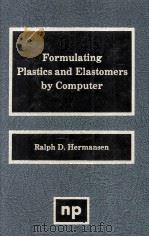
- FORMULATING PLASTICS AND ELASTOMERS BY COMPUTER
- 1991 NOYES PUBLICATIONS
-

- SUPERFLUIDS VOLUMEⅡ
- NEW YORK JOHN WILEY & SONS INC
-
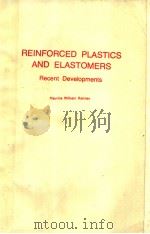
- REINFORCED PLASTICS AND ELASTOMERS RECENT DEVELOPMENTS MAURICE WILLIAM RANNEY
- NOYES DATA CORPORATION
-
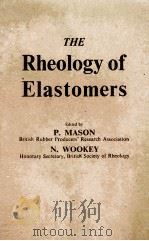
- THE RHEOLOGY OF ELASTOMERS
- 1958 PERGAMON PRESS
-

- Ultraviolet Spectra of Elastomers and Rubber Chemicals
- 1966 PLENUM PRESS DATA DIVISION
-

- Handbook of Themoplastic Elastomers
- 1979 VAN NOSTRAND REINHOLD COMPANY
-
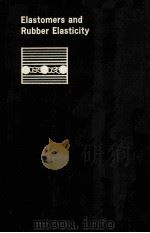
- ACS SYMPOSIUM SERIES 193 Elastomers and Rubber Elasticity
- 1982 AMERICAN CHEMICAL SOCIETY
-
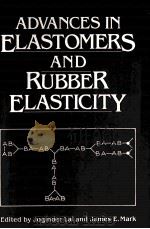
- Advances in Elastomers and Rubber Elasticity
- 1986 PLENUM PRESS
提示:百度云已更名为百度网盘(百度盘),天翼云盘、微盘下载地址……暂未提供。➥ PDF文字可复制化或转WORD
